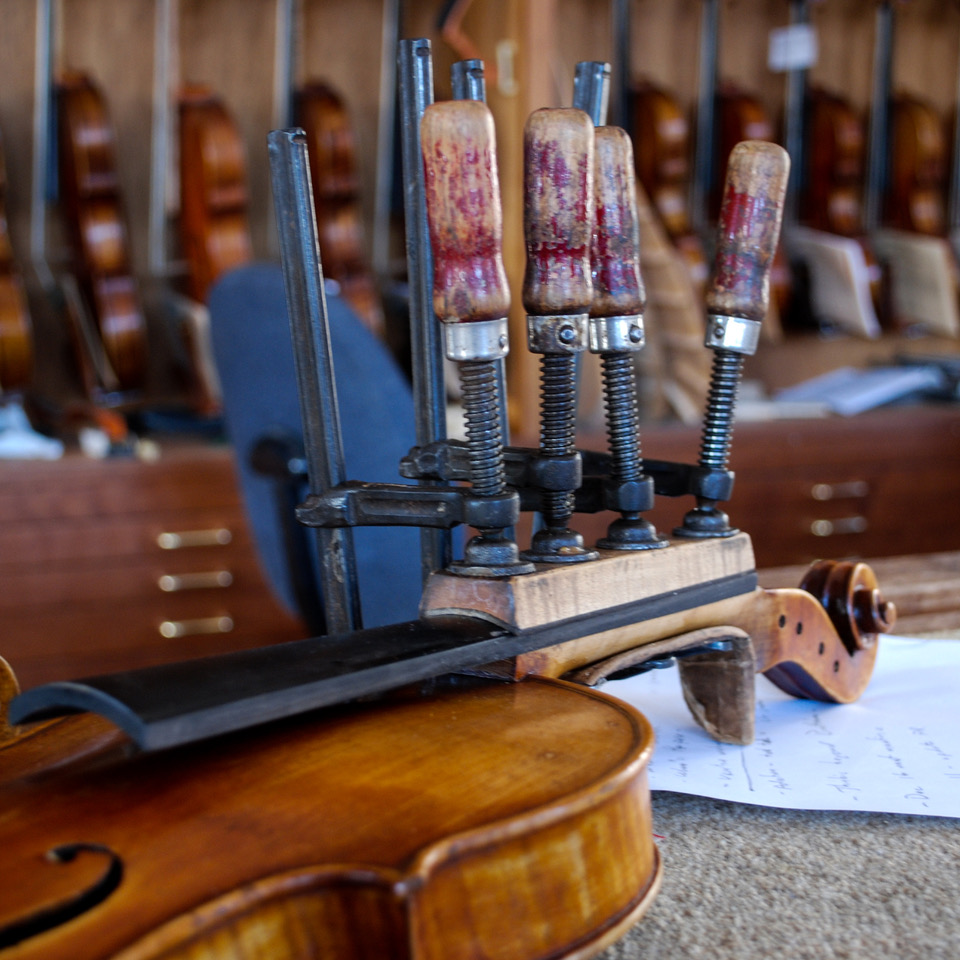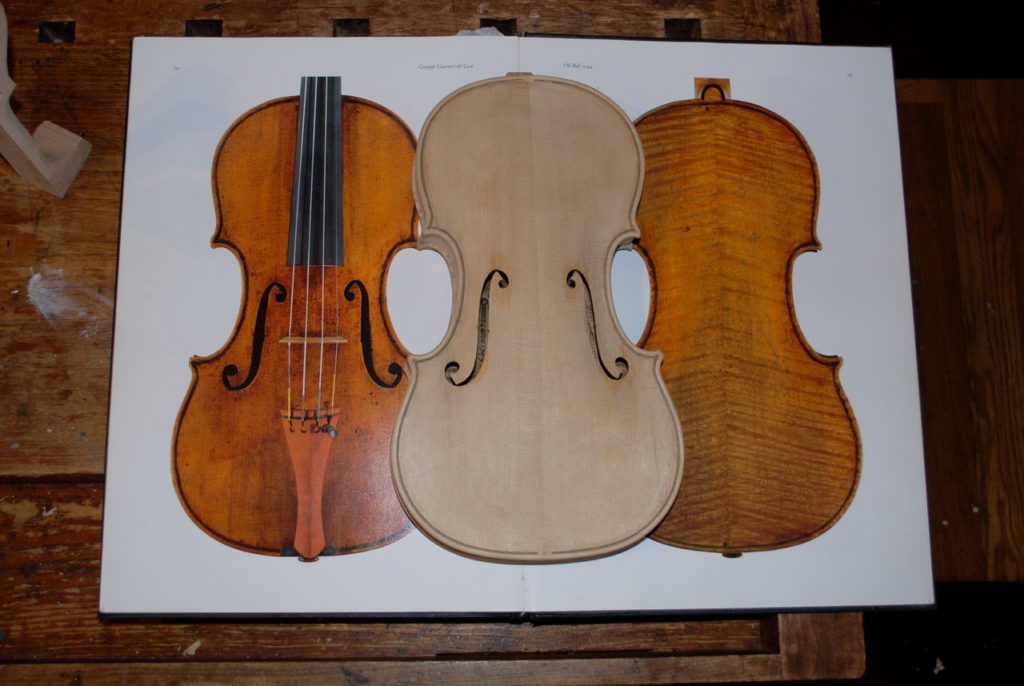One of the reasons I copy instruments from other makers is to try to understand what it felt like to make an instrument the way they did. I feel I can get to know them through their work. Over the years I’ve found myself drawn to three makers in particular: Stradivari, Guarneri, and Storioni.
Antonio Stradivari (1644-1737)
The first time I held and played a Strad, when I was working in Brad Taylor’s showroom in 1971, it exploded my understanding of what it is possible for a violin to be.
Everything lined up in a way that I had never experienced with a violin before, and there was something special about how easy and full and in tune the instrument was.
Following that initial exposure, I spent more time with Stradivari’s instruments and studying his career, his work, and his business. I once heard someone suggest that in seeking to understand him, I am apprenticed to him; I am studying him; I am just 300 years late showing up. There is a relationship even across the centuries, and it is still possible for me to learn from him, to be a student of his, and to follow in his footsteps.
This is not a new concept. For awhile, violinmaker Giovanni Battista Guadagnini (1711–1786) was putting in his instruments labels that identified him as a “student of Stradivari.” The evidence is pretty clear that he never spent time in Stradivari’s shop and may never have actually met him. So it raises the question: What does it mean to be a student of someone?
Bartolomeo Giuseppe Guarneri del Gesù (1698-1744)
Quite simply, Guarneri’s instruments are a lot of fun for me. I’ve been able to get a sense of the feel and solidity of his instruments both through photographs and through violins that I’ve been able to handle.
Guarneri experimented with the forms that his father and grandfather and uncles had used, and he bent them to his imagination, following his instincts, following his eye, and doing what looked good and what felt good to make. He had a freedom of execution, and an imaginative eye and hand.
In contrast, Stradivari was training as an architect. His approach was methodical—he was paying attention to classic proportions and ideas, and executing that in a careful way—and his instruments are gorgeous. But that is not my approach. I am much more comfortable with Guarneri’s approach, and this is why I enjoy working on his patterns so much.
Lorenzo Storioni (1744-1816)
Stradivari is awe-inspiring, and Guarneri is fun, but I always come around to Storioni as the maker with whom I feel the most affinity. Honestly, I don’t know as much about Storioni; he is not that well-known or prolific. Though I haven’t held more than a dozen of his instruments, the inspiration that has come from those experiences has been tremendous.
Storioni was inspired by both Stradivari and Guarneri, as I have been. I see in his work a similar sort of copying to my own, taking inspiration from others and combining it with his own personality and style. He utilized a wide range of patterns, as I do. He was neat but not fussy. And he worked with a lot of unusual wood, perhaps not as broadly as I find myself working with, but heading in that direction.
Storioni’s instruments are high-level, professional quality instruments. They sound good, they provide what a violinist needs, and they have strong personalities. Those are my goals, too, and Storioni consistently figured out how to come up with something that works well in all of these areas.
Inspiration:Improvisation
Stradivari, Guarneri, Storioni. The way that these three makers’ ideas move into my work, I aim for 50% inspiration and 50% improvisation. After years of experimenting with this ratio, I find that for me, 50:50 is best for producing the most successful instrument. I continue to make instruments on the forms that these three makers and others used because I learn so much each time and because I enjoy applying my own creativity and skill to theirs. How is my work different from their work? How does my hand work differently from whoever’s hand made this? I am still learning.




